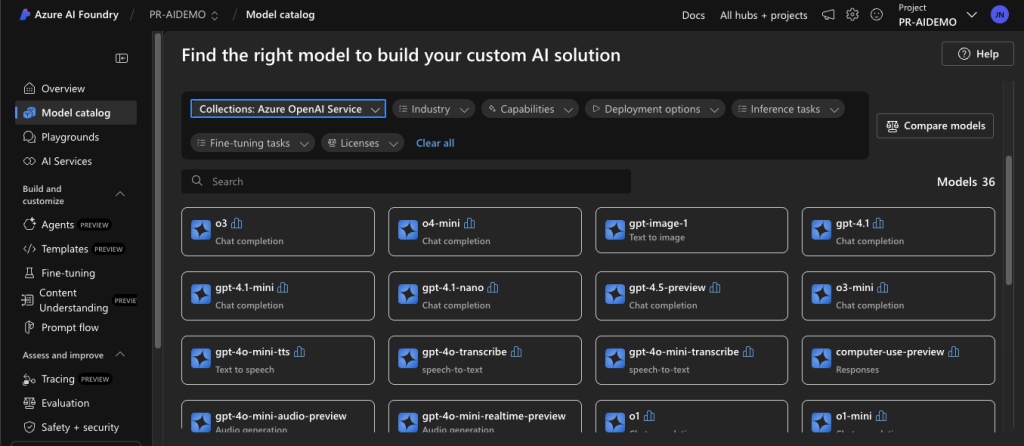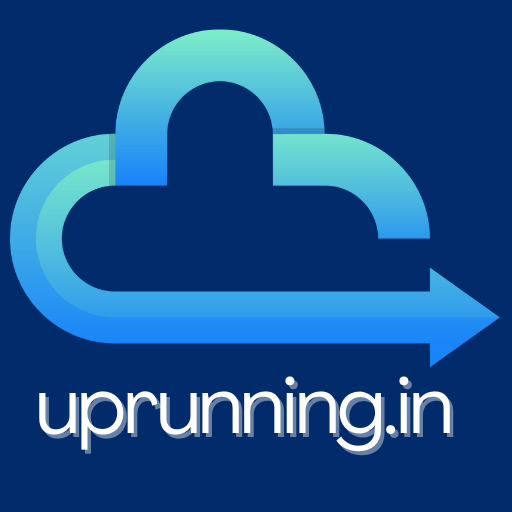In an age where artificial intelligence is becoming the backbone of digital transformation, Microsoft’s Azure AI Foundry is once again leading the way by expanding its Model Catalog with a powerful new lineup. The recent update introduces cutting-edge models like GPT-4.1, GPT-image-1, and enhanced reasoning models (o3, o4-mini), each engineered to meet modern enterprise demands with precision, performance, and scale.
Let’s explore what’s new—and more importantly, why it matters.

🧠 GPT-4.1: The Million-Token Game-Changer
What’s new:
The GPT-4.1 model brings with it an astonishing 1 million token context window—a massive leap from previous versions.
Usage:
- Ideal for analyzing massive legal contracts, research papers, or logs without splitting them into chunks
- Powers enterprise copilots that must retain long-term conversational memory
- Suitable for coding assistants parsing entire repositories in one go
Benefits:
- No more context loss: Entire books or documents can be processed at once
- High accuracy in summarization & analysis
- Faster insights from large datasets
Example Use Case:
A financial services firm can feed an entire year’s worth of compliance documentation into GPT-4.1 and generate risk summaries in seconds.
🎨 GPT-image-1: Where Vision Meets Precision
What’s new:
GPT-image-1 is Azure’s new image generation model, currently in limited preview. It enables text-to-image, inpainting, and image-to-image transformation with fine-grain control.
Usage:
- Generating visuals for marketing, UI mockups, or architectural drafts
- Filling missing parts of old photos or scanned documents (inpainting)
- Accepting both text and image input for creative design
Benefits:
- Design democratization: Non-designers can generate high-quality visuals using natural language
- Faster prototyping: Ideal for product teams creating wireframes and MVPs
- Accessible creativity: Bridging the gap between art and AI for all users
Example Use Case:
A real estate startup can generate interior layout images based on a client’s style preference using GPT-image-1 in real time.
🧩 o3 & o4-mini: Smarter Reasoning, Compact Size
What’s new:
These models are built for efficient multi-step reasoning with reduced latency and memory requirements—perfect for chat-based apps, embedded devices, and workflows.
Usage:
- Creating intelligent agents that follow multi-turn conversations
- Embedding logic into low-code/no-code apps
- Providing smart answers in constrained environments (like mobile apps)
Benefits:
- High efficiency: Great performance without GPU-hungry compute
- Low-latency inference: Better UX in real-time applications
- Affordable scalability: Deploy intelligent assistants even on budget
Example Use Case:
A customer support chatbot built using o3 can handle product returns, shipping queries, and escalation flows with logic-driven memory.
🔍 Why This Update Is a Big Deal
With this update, Azure AI Foundry is not just adding models—it’s empowering use cases across sectors like finance, healthcare, manufacturing, and education.
Whether you’re an AI engineer building a next-gen assistant or a product manager looking to infuse intelligence into your app, these models reduce the friction of innovation.
✅ Final Thoughts
Azure AI Foundry’s expanded Model Catalog marks a significant milestone in making enterprise-grade AI more powerful, accessible, and flexible. From multi-million token processing to creative visuals and efficient logic handling, Microsoft’s vision is clear: empower every developer and business to build smarter, faster, and responsibly.
Stay tuned—this is just the beginning.
![]()

Leave a Reply